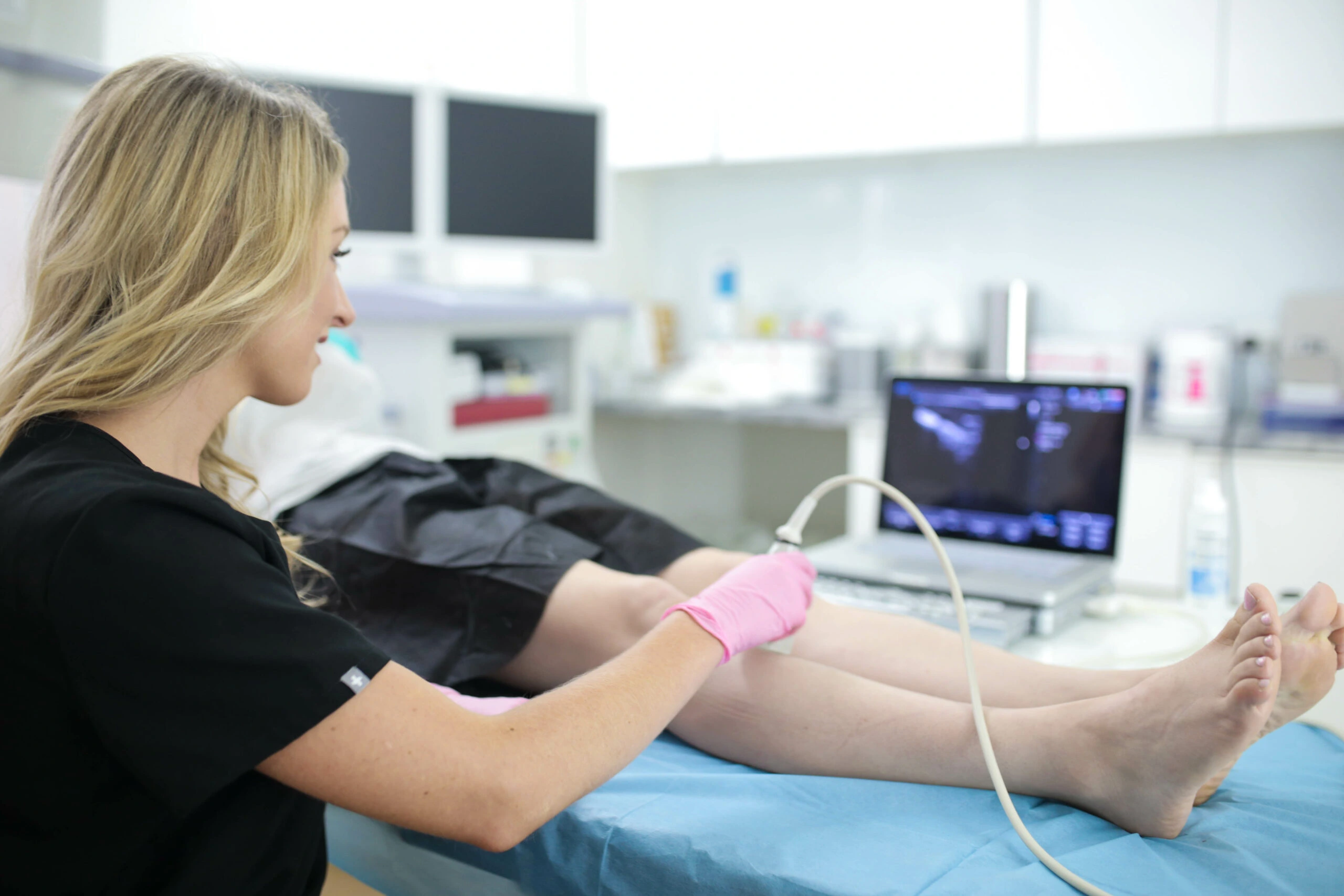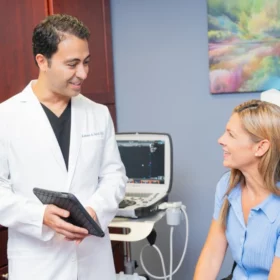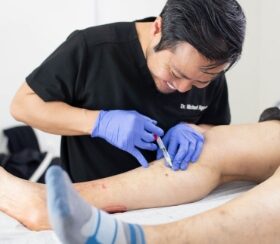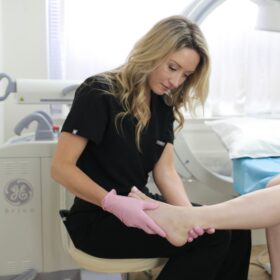Chronic venous insufficiency is a medical condition where the veins in your legs have trouble returning blood to your heart. This condition can result in symptoms such as leg pain, swelling, and fatigue, making it difficult to complete daily activities. While there are various treatments available to manage Venous insufficiency, many people wonder if walking can cure the condition.
At Vein Treatment Clinic, we specialize in minimally invasive treatments for spider veins and varicose veins. We believe that the best way to manage venous insufficiency is to understand its causes and risk factors, so that you can take steps to reduce your symptoms. In this article, we will explore the relationship between walking and venous insufficiency, and help you understand how to improve your circulation to reduce your symptoms.
Understanding Venous Insufficiency
Before we explore the relationship between walking and venous insufficiency, let’s first understand what causes the condition. The veins in your legs have valves that help to prevent blood from flowing backward. If these valves become damaged or weakened, the blood can flow backward and pool in your legs. This can cause the veins to become enlarged and twisted, leading to varicose veins and other symptoms of Venous insufficiency.
Risk Factors for Venous Insufficiency
While anyone can develop venous insufficiency, some people are more at risk than others. The following factors can increase your risk of developing venous insufficiency:
- Age: As you get older, the valves in your veins can become weaker, making it more difficult for blood to flow back to your heart.
- Genetics: If someone in your family has had venous insufficiency, you may be more likely to develop the condition.
- Obesity: Carrying excess weight can put added pressure on your veins, making it more difficult for blood to flow back to your heart.
- Pregnancy: The changes in hormones and increased blood volume during pregnancy can put added pressure on the veins in your legs, leading to venous insufficiency.
- Sitting or standing for long periods: If you spend a lot of time sitting or standing, your calf muscles aren’t able to contract and push blood back to your heart. This can cause blood to pool in your legs, leading to venous insufficiency.
How Walking Improves Circulation
Now that we understand the risk factors associated with venous insufficiency, let’s explore how walking can improve circulation in your legs. Walking is a low-impact exercise that can help to strengthen your calf muscles and promote blood flow in your legs. When you walk, your calf muscles contract, which helps to push blood back to your heart. This movement helps to prevent blood from pooling in your legs, reducing your risk of venous insufficiency.
Additionally, walking can help to reduce your blood pressure, which can also improve circulation in your legs. High blood pressure can make it difficult for blood to flow through your veins, which can cause blood to pool in your legs. When you walk, your blood vessels dilate, allowing blood to flow more freely throughout your body.
Tips for Walking to Improve Circulation
If you are looking to improve circulation in your legs to reduce your symptoms of venous insufficiency, the following tips can help:
- Aim to walk for at least 30 minutes each day.
- Try to walk on a flat, even surface to reduce your risk of injury.
- Wear comfortable, supportive shoes to reduce your risk of foot or ankle pain.
- If you experience pain or discomfort while walking, take a break and elevate your legs.
- If you are unable to walk for 30 minutes at a time, try lifting one leg at a time while sitting. This can help to contract your calf.
Other Lifestyle Changes to Improve Circulation
In addition to walking, the following tips can help reduce your symptoms:
- Elevate your legs: If you experience swelling or discomfort in your legs, elevating your legs above your heart can help to reduce symptoms. This can be done by propping your legs up on a pillow or using a leg rest.
- Avoid standing or sitting for long periods: If you have a job that requires you to stand or sit for long periods, take regular breaks to move around and stretch your legs.
- Wear compression stockings: Compression stockings are designed to help improve circulation in your legs by applying pressure to your veins. These stockings can help to reduce swelling and other symptoms of Venous insufficiency.
- Maintain a healthy weight: Carrying excess weight can put added pressure on your veins, making it more difficult for blood to flow back to your heart. Maintaining a healthy weight can help to reduce your risk of Venous insufficiency.
Minimally Invasive Treatments: The Only Long-Term Solution for CVI
While walking and lifestyle changes can help manage the symptoms of venous insufficiency, minimally invasive treatments are the only long-term solution for this condition. At Vein Treatment Clinic, we offer a variety of minimally invasive treatments for venous insufficiency, including endovenous laser ablation, radiofrequency ablation, and sclerotherapy. These treatments are designed to close the damaged veins and reroute blood flow to healthier veins, which can reduce symptoms and prevent complications. These treatments are safe, effective, and require little to no downtime, making them a convenient and long-lasting solution for those suffering from venous insufficiency.
If you are experiencing symptoms of Venous Insufficiency, it is important to seek medical attention from a board-certified vein doctor. At Vein Treatment Clinic, we are committed to providing personalized care for our patients. We offer hassle-free insurance verification even before the first appointment, so you can focus on getting the treatment you need. Our state-of-the-art locations across the United States, including New York, New Jersey, Long Island, California, and Washington DC, make it easy to access the care you need. Don’t let chronic venous insufficiency hold you back any longer. Contact us today to schedule a consultation with one of our experienced vein doctors.
Frequently asked questions
Can chronic venous insufficiency heal itself?
No, it doesn’t go away on its own. This condition means your leg veins aren’t working quite right, and over time, that can get worse. The good news is, we can treat it, safely and gently.
Can walking cure venous insufficiency?
Walking is great for your circulation, and it can definitely help your legs feel better. But it won’t fix the problem completely. Think of it like brushing your teeth: it’s part of the routine, but you still need the dentist when something’s wrong.
What are the best treatments for vein disorders?
We use simple, low-risk treatments that help close or shrink the veins that aren’t working well. These include:
- A small injection (sclerotherapy)
- A gentle heat treatment to close the vein (ablation)
- A special foam (Varithena) that targets larger veins
These are outpatient treatments, meaning you go home the same day.
Can chronic venous insufficiency affect your life expectancy?
Not directly, no. But if you ignore it, it can cause painful problems like swelling, wounds, or clots. That’s why it’s important to catch it early. With the right care, you can stay active and avoid complications.
Why is chronic venous insufficiency in the spotlight right now?
Chronic venous insufficiency has been getting more attention lately after reports about Trump’s vein condition. Some news sources shared that Donald Trump was diagnosed with CVI, a condition that can cause leg swelling and circulation problems. That coverage has helped raise awareness and made more people curious about their own symptoms. It’s a reminder that leg discomfort isn’t just part of getting older. It’s something worth checking out.












